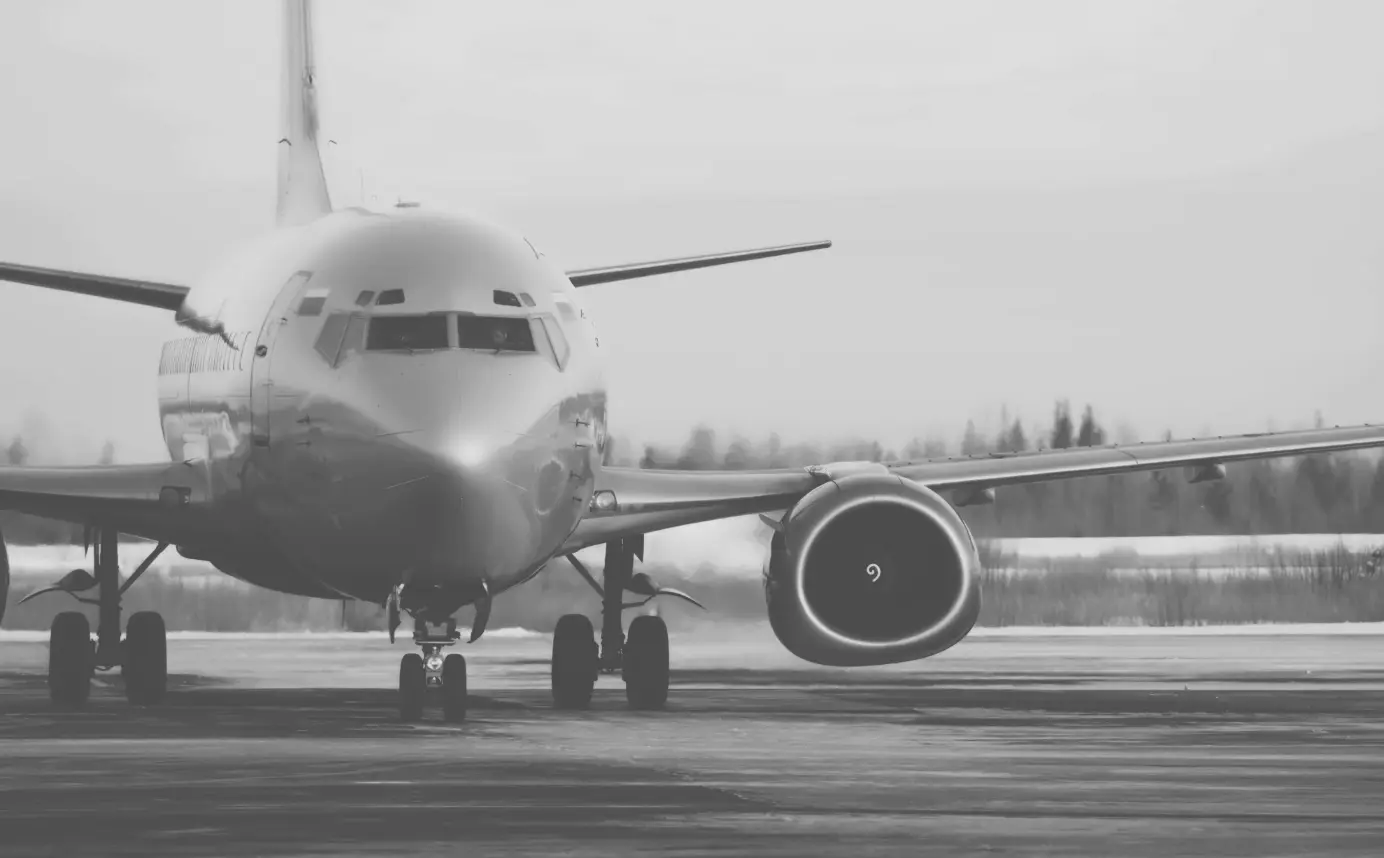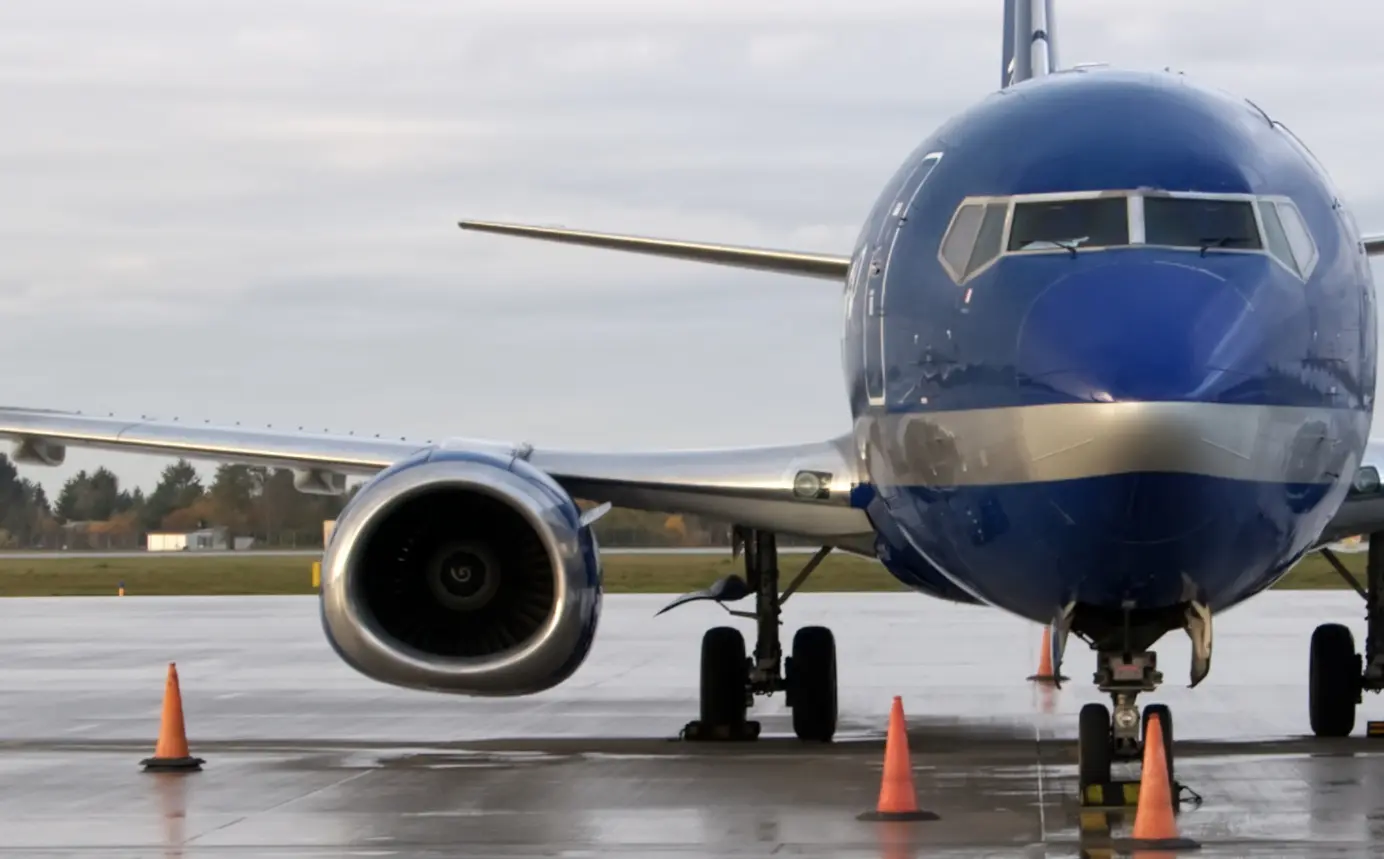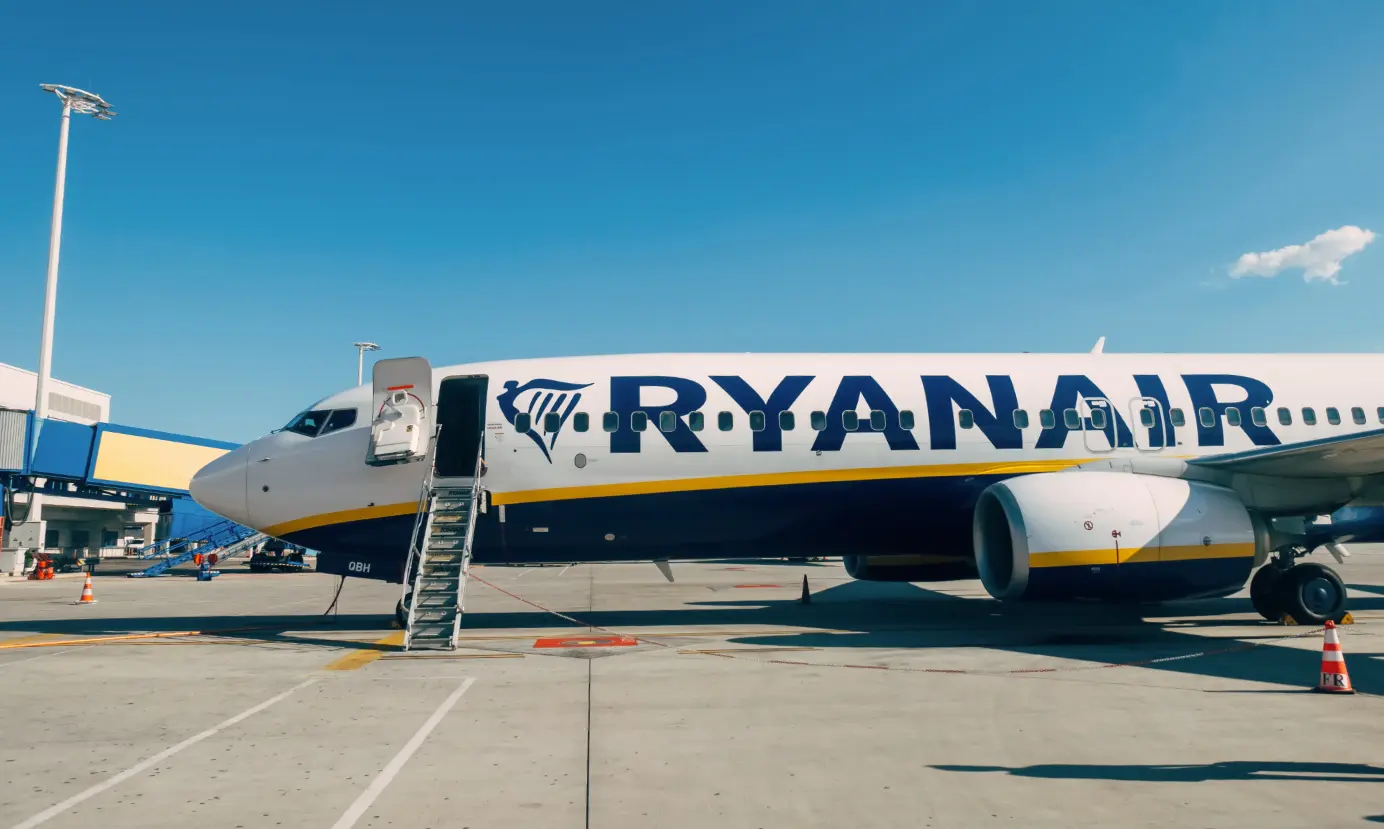
Why Boeing 737 Engines Are Flat
The Boeing 737 is one of the most sold airliners in the world and features a unique engine design. Find out why the 737 engines are flat.
Table of Contents
The Boeing 737 is one of the most popular global commercial aircraft. While you've undoubtedly seen pictures of these airliners, you might not have noticed the quirk in their design. The engine of a Boeing 737 is flat - to be specific, the engine's casing flattens out at the bottom.
Modern aircraft designs utilize two primary layouts: An engine beneath the wing or an engine mounted on the fuselage. The prevailing engine configuration is beneath the wing, and the Boeing 737 features this layout. So why the odd shape?
Read more to discover why Boeing 737 engines are flat, how this relates to the overall aircraft design, and why Boeing didn't alter their 737 to accommodate a round engine nacelle.
Why Are Boeing 737 Engines Flat?
Boeing launched the initial design of the Boeing 737 in the 1960s. The 737 was designed and built for a different customer base, and the airline industry was different back then. For example, very few airports had access to stair cars at that time, and almost none were equipped with jet bridges to provide passengers easy access to and from the aircraft. So the doors - including the cargo doors - needed to be low enough to allow passenger and cargo handling without using a truck or ladder.
Therefore, the early versions of the Boeing 737, namely the -100 and -200, operated as low to the ground as possible. Pratt & Whitney's JT8D turbofan engine that powered the first versions of the 737 wasn't flat at the bottom as they were small enough in diameter to fit perfectly under the wings while still providing adequate ground clearance for takeoff and landing.
However, by the 1980s, the airline market was changing. Increasing competition from other manufacturers forced Boeing to improve fuel efficiency by altering its aircraft designs. By then, Airbus had introduced the A320 family of aircraft to rival Boeing's 737 models. Airbus had already realized that the more air an engine could suck in, the greater the fuel efficiency. Airbus had designed their A320 with larger engines in mind. Boeing, however, had no choice but to adapt its designs to compete for airline orders. To increase fuel efficiency, they would need a larger engine.
Choosing suitable engines for the next version of the 737 was difficult due to restrictions imposed by the underwing location and short landing gear, but ultimately Boeing chose the CFM56. This high-bypass turbofan engine powered the Second Generation of Boeing 737 named 737-300/-400/-500.
CFM International's new engine had a different shape and a larger diameter than the JT8D. This was a significant problem for Boeing. The old 737 design could not directly accommodate the new larger engine, and a redesign of the 737 airframe would have been lengthy and very expensive.
Instead, Boeing positioned the new CFM56 engines more in front of the wing to give the aircraft enough ground clearance while keeping the old 737 design. This position helped maintain an optimum ratio between the inlet height above the ground and the diameter of the engine inlet.

To further minimize the risk of the engines hitting the ground, Boeing engineers made the bottom of the nacelle flat. This helped to achieve maximum distance for clearance while avoiding a significant redesign of the plane. The engine itself remains round (because the fan is circular), but the nacelle in which the engine is mounted is flat at the bottom.
The Boeing 737-300, -400, and -500 were the first to feature the flat engine nacelles and were introduced in 1984. Pilots did not have to recertify to fly the new model as the new nacelle design meant that the Boeing 737 retained its overall shape and aerodynamic performance.
Why Is The 737 So Low To The Ground?
When Boeing introduced the 737 in 1965, they already offered the larger Boeing 727 for the airline's longer routes. But demand started showing for smaller aircraft in the 100-seat range for shorter routes as a regional hopper. Boeing developed the 737 to satisfy these needs.
When Boeing introduced the 737, passengers would board the aircraft by stairs, not jet bridges. Airport personnel would load and unload luggage by hand, and it was the same story with catering. The 737 could serve smaller airports without jet bridges or similar infrastructure because of its low height.
On the more technical side, the 737's lower ground clearance also allowed for shorter and, therefore, lighter landing gear. Aircraft mechanics also had a much easier time performing service on the engines.

Why Didn't Boeing Alter The Plane's Design?
Over the years, the Boeing 737 has evolved. The current MAX version is the fourth significant evolvement of the 737, which became infamous in 2019 after a series of crashes. The other three are the "Originals," "Classic," and "Next Generation." Boeing upgraded each version, offering some improvements over the past iterations, but the overall 737 design has stayed the same.
Boeing's early 737 models had their bellies sitting too close to the ground to make any significant changes to the size of the engine. Boeing's only other choice would have been to relocate the engines to another area on the plane in a complete redesign.
A redesign could have been more fuel-efficient, but it would have come at a considerable cost to Boeing. Such a redesign would be expensive, take a lot of time, and introduce the risk of needing recertification as a new aircraft by the FAA. Recertification would mean that existing pilots would need new training at the expense of the airlines.
The time, money, and resources involved in a redesign would have negated the savings of a more fuel-efficient engine. Therefore, it was not viable for the company, and they had to explore other options instead.
In addition, airlines prefer to acquire new aircraft without hassles or challenges with integrating a new aircraft type into their fleet. It is, therefore, a significant advantage for them to buy newer versions of the same plane. So when the old Boeing 737-200s were approaching the end of their service life, the airline could replace them with a newer 737-400 and put them into service quickly.

Finally, low-cost airlines usually prefer the low ground clearance of the 737, so they can use cheaper airstairs for passenger handling, lowering their costs.
Through its four iterations, the Boeing 737 has become an essential product for Boeing and would help the 737 become the best-selling aircraft in the world.
The 737 Engine's Role in the MAX Crashes
The Boeing 737 MAX and the two fatal accidents in 2018 and 2019 have been heavily covered in the media, and Boeing has been under massive pressure to fix the plane.
Today we know much more about what happened and the cause of the accidents. The 737's engines play an important role in those accidents.
To make the 737 more fuel efficient, Boeing equipped their new 737 MAX aircraft with the improved CFM LEAP-1B engines. But there was a problem. The new engines were physically larger and would sit too low to the ground, giving the MAX too little ground clearance.
To avoid a costly and lengthy aircraft redesign, Boeing moved the engines further up and forward on the wing. This gave the plane sufficient ground clearance. But test flights showed the engine's new position affected the aircraft's stability in the air, and dangerous stall situations could occur.
Boeing solved that problem by installing a software system that automatically pointing the plane's nose down if it detected one of these dangerous situations. Boeing calls the system MCAS.
However, MCAS was granted too much authority by Boeing, and it disregarded the pilots' inputs. Additionally, MCAS only used one sensor, which could be prone to failure, and Boeing failed to inform airlines or pilots about the system.
The two crashes with the 737 MAX in 2018 and 2019 involved the MCAS intervening without reason due to a faulty sensor. Both aircraft were pushed into deep dives by MCAS. The pilots were unable to regain control.
Conclusion
The evolution of the 737 came down to an engine change when Boeing opted to replace the JT8D engine with the CFM56. This change was due to mounting pressure from other aircraft manufacturers that were increasing their aircraft's fuel efficiency, putting pressure on Boeing to compete.
The flat-bottomed design was a result of equipping the 737 with a more efficient and modern engine that was also larger. Still, it accommodated the new engine while keeping costs to a minimum and avoided flight crew retraining. Ultimately, this decision helped Boeing achieve mass commercial success in later years.
Planenerd Newsletter
Join the newsletter to receive the latest updates in your inbox.






